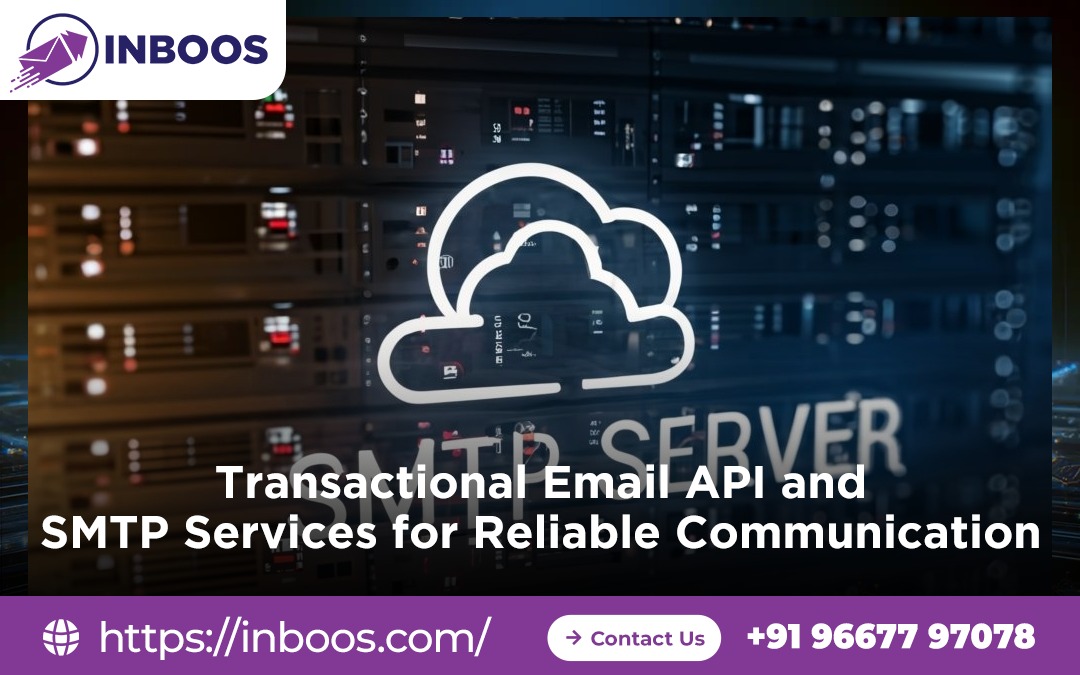The moment you hit “send” on an email campaign, a silent battle begins. Your meticulously crafted message embarks on a complex journey through various servers, firewalls, and spam filters, all scrutinizing its legitimacy. If your emails aren’t landing in the inbox, it’s a frustrating, often invisible problem that directly impacts your sales, engagement, and customer relationships.
This isn’t just about email delivery (getting to the recipient’s server); it’s about email deliverability (actually landing in the primary inbox). If your deliverability is suffering, you’re losing money and opportunities. This in-depth guide will provide a systematic approach to identifying common email deliverability issues and, more importantly, lay out the actionable steps to fix them.
Understanding the Landscape of Email Deliverability
Before troubleshooting, it’s crucial to grasp the key players in the email ecosystem:
- Internet Service Providers (ISPs): These are the gatekeepers (Gmail, Outlook, Yahoo, etc.). They employ sophisticated spam filters to protect their users.
- Spam Filters: Algorithms that analyze hundreds of factors (sender reputation, authentication, content, links) to decide if an email is legitimate or spam.
- Sender Reputation: This is your domain’s and IP address’s “trust score” with ISPs. A good reputation means your emails are more likely to reach the inbox. It’s built on consistent, legitimate sending behavior and positive engagement.
Common deliverability issues typically fall into one or more of these categories:
- Authentication Failures: ISPs can’t verify you are who you say you are.
- Poor Sender Reputation: ISPs don’t trust your sending domain or IP.
- Content Issues: Your email content triggers spam filters.
- Infrastructure Problems: Technical setup or sending practices are flawed.
Phase 1: Identifying the Problem (Diagnosis)
Effective troubleshooting starts with a thorough diagnosis. Don’t guess; investigate using the right tools.
Check 1: Your ESP’s Analytics & Logs
Your Email Service Provider (ESP) is your first and most vital source of data. Dive deep into their dashboards and logs.
Table 1: Key ESP Metrics to Monitor & Their Implications
| Metric | What to Look For (Healthy Range) | Implication of Poor Performance | Action |
| Bounce Rate | Below 2% (especially hard bounces) | High bounces indicate poor list quality, invalid addresses. | Immediately remove hard bounces. Re-engage or remove soft bounces. |
| Hard Bounces | 0% (or very close) | Permanent delivery failure (non-existent address). | Critical to remove immediately. |
| Soft Bounces | Varies (e.g., 0.5% – 2%) | Temporary issue (full inbox, server error). Retry might work. | Monitor trends; if persistent, consider removing. |
| Spam Complaint Rate | Below 0.1% | Recipients actively marking your email as spam. Damages reputation heavily. | Identify source of complaints, immediately remove complainers. Improve content/segmentation. |
| Open Rate | Varies by industry (e.g., 15-30%) | Low opens suggest subject line issues, poor sender reputation, or landing in spam. | Improve subject lines, preheaders. Check inbox placement. |
| Click-Through Rate (CTR) | Varies (e.g., 2-5%) | Low CTR suggests content is irrelevant, CTA is unclear, or emails are not seen. | Optimize content, CTAs. Ensure emails are reaching inbox. |
| Deliverability Rate | Above 95% | Percentage of emails that reached recipient server. | If low, investigate authentication, blacklists, ISP throttling. |
| Unsubscribe Rate | Below 0.5% | Indicates content irrelevance or frequency issues. | Analyze feedback, segment better, adjust sending frequency. |
Export to Sheets
Your Action: Consistently monitor these metrics. Look for sudden spikes in bounces or complaints, or drops in open/deliverability rates. Use webhooks if your ESP offers them to get real-time alerts.
Check 2: Inbox Placement Testing
This is how you truly know where your emails are landing across different ISPs.
- Seed List Testing: Use a service (e.g., Mail-Tester.com, GlockApps, or your ESP’s built-in tool) that provides a list of “seed” email addresses across various ISPs. Send your campaign to this list, and the service will report where it lands (inbox, promotions, spam).
- Manual Spot Checks: Also send test emails to your own accounts at Gmail, Outlook, Yahoo, etc., and observe where they land.
Your Action: Run these tests before major campaigns and routinely during ongoing sends.
Check 3: DNS Records (Authentication)
Misconfigured or missing authentication records are a leading cause of deliverability issues.
- SPF (Sender Policy Framework): Is it correctly set up? Does it include all your sending services (ESP, CRM, marketing automation, transactional)? Is it under the 10-lookup limit?
- DKIM (DomainKeys Identified Mail): Is the record present and valid? Does the public key match the private key used by your sender?
- DMARC (Domain-based Message Authentication, Reporting & Conformance): Is it configured? Are you receiving DMARC reports (RUA/RUF)? These reports are invaluable for seeing who is sending email from your domain and if it’s passing authentication.
Your Action: Use online tools like MXToolbox’s DMARC, SPF, and DKIM checkers to verify your records. Any errors or warnings need immediate attention.
Check 4: Blacklist Checks
If your domain or sending IP address ends up on a blacklist, your emails will be blocked or sent directly to spam.
- Tools: Use services like MXToolbox Blacklist Check, Spamhaus, or BarracudaCentral.
Your Action: If blacklisted, identify the specific blacklist and the reason. Most blacklists have a delisting process (often tied to fixing the underlying issue).
Check 5: Email Content Analysis
Even with perfect technical setup, spammy content can trigger filters.
- Spam Trigger Words: Are you using excessive salesy language, “free” offers, or too many exclamation points?
- Links & Images: Too many links, suspicious URLs, or a very high image-to-text ratio can be red flags.
- HTML Quality: Poorly coded HTML, excessive inline styling, or large file sizes can trigger filters.
- Personalization: Lack of personalization can signal mass, impersonal sending.
Your Action: Use email spam checkers (often built into ESPs or standalone tools) to score your content. Read your email from an ISP’s perspective.
Phase 2: Fixing Common Deliverability Issues (Solutions)
Once you’ve identified the problem, it’s time for corrective action.
Solution 1: Fortify Your Authentication (SPF, DKIM, DMARC)
- Correct DNS Records: Double-check every character. Work with your ESP’s support to get the exact values.
- Consolidate SPF: If you have multiple services, ensure your SPF record includes all of them without exceeding the 10-lookup limit.
- DMARC Policy: Once your SPF and DKIM are consistently passing, consider moving your DMARC policy from
p=none(monitor only) top=quarantine(send to spam folder) or evenp=reject(block email) to protect your domain from spoofing.
Solution 2: Improve Your Sender Reputation
- IP/Domain Warm-up: If you have a new sending IP or domain, or if your reputation is severely damaged, you must re-engage in a gradual warm-up process. Start small, send to your most engaged users, and slowly increase volume.
- Aggressive List Hygiene: Immediately remove all hard bounces. Implement processes to remove soft bounces if they’re persistent. Regularly identify and remove inactive subscribers.
- Strict Opt-in Practices: Use double opt-in to ensure subscribers genuinely want your emails. This reduces spam complaints significantly.
- Segmentation & Personalization: Send relevant content to the right people. Highly engaged recipients (who open and click) boost your reputation.
- Monitor Feedback Loops (FBLs): Sign up for FBLs with major ISPs (or ensure your ESP handles them) to be notified when someone marks your email as spam. Immediately remove these users from your list.
Solution 3: Optimize Your Content
- Avoid Spam Trigger Words: Research and avoid common spammy phrases.
- Clean HTML: Use clean, semantic HTML. Ensure your email is responsive and displays well on all devices and email clients. Balance text and images (aim for more text than images).
- Clear Value Proposition: Ensure your email clearly communicates its value and purpose.
- Clear Calls-to-Action (CTAs): Make it easy for recipients to take the desired action.
- A/B Test Subject Lines & Preheaders: These are crucial for enticing opens without being spammy.
Solution 4: Manage Sending Volume and Frequency
- Consistent Sending: ISPs prefer senders with consistent, predictable sending patterns. Avoid sporadic, large blasts followed by long silences.
- Respect Rate Limits: Be aware of your ESP’s and ISPs’ rate limits. Trying to send too many emails too quickly can lead to throttling or blocks.
Solution 5: Address Blacklisting
- Identify Cause: Understand why you were blacklisted (e.g., high spam complaints, sending to spam traps, botnet activity).
- Fix Underlying Issue: Rectify the problem that led to the blacklisting (e.g., clean list, review sending practices).
- Request Delisting: Follow the specific delisting procedures for each blacklist. This often involves an appeal and a promise of corrective action.
Solution 6: Check Reverse DNS (PTR Records)
If you’re using dedicated IPs, ensure your ESP has configured PTR records that correctly map your IP address back to your sending domain. This is an important trust factor for many mail servers.
Advanced Troubleshooting & Continuous Monitoring
Deliverability isn’t a “set it and forget it” task; it’s an ongoing process.
- Leverage DMARC Reports: These reports (RUA for aggregate, RUF for forensic) offer deep insights into authentication failures and potential domain spoofing. Use a DMARC reporting service to parse and visualize this complex data.
- Webhooks for Real-time Alerts: Configure your application to receive webhooks from your ESP for critical events (hard bounces, spam complaints). This enables immediate action, like automatically removing problematic addresses from your CRM.
- Dedicated Deliverability Consultants: For complex issues or very high volumes, consider engaging a deliverability consultant. They have specialized knowledge and tools to diagnose and rectify deep-seated problems.
- Continuous A/B Testing: Always be testing subject lines, content variations, and even send times to optimize engagement and inbox placement.
Troubleshooting Flowchart: A Conceptual Guide
Table 2: Email Deliverability Troubleshooting Flowchart
| Problem Identified (from Phase 1) | Immediate Check | Primary Solution | Ongoing Monitoring |
| High Bounce Rate | ESP logs: Hard vs. Soft bounces. | List Hygiene: Remove hard bounces immediately. Verify list. | Regular list cleaning. Double opt-in. |
| High Spam Complaint Rate | ESP reports: Which ISPs/campaigns? | FBLs: Remove complainers. Content: Review for spam triggers/relevance. Segmentation: Improve targeting. | Monitor FBLs daily. A/B test content/subject lines. |
| Poor Inbox Placement | Inbox placement tests across ISPs. DMARC reports. | Authentication: Verify SPF, DKIM, DMARC. Reputation: Warm-up IP/domain. Content: Spam score check. | Consistent inbox testing. DMARC reporting. |
| Blacklisting | Check specific blacklists (MXToolbox, Spamhaus). | Identify Cause: Fix underlying issue. Delisting: Follow blacklist’s appeal process. | Proactive reputation management. |
| Low Open/Click Rates | Check inbox placement first. | Content: Improve subject lines, preheaders, relevance, CTA. Segmentation: Better audience targeting. | A/B testing. User engagement tracking. |
| Emails Delayed/Throttled | ESP logs: Delivery status. | Warm-up: If new IP/domain. Volume Management: Adjust sending rate. | Monitor ISP rate limits. |
Export to Sheets
Conclusion
Email deliverability troubleshooting is not a one-time fix but an ongoing commitment. By systematically identifying issues through diligent monitoring and analytics, and then applying targeted solutions related to authentication, sender reputation, and content, you can reclaim your inbox placement. Invest in these practices, and you’ll transform your email program from a source of frustration into a powerful engine for growth and engagement.
📩 Have Questions or Need Expert Help?
Our team is here to make your email marketing, bulk emailing, and mass emailing effortless and effective.
🚀 Let’s boost your deliverability, scale your outreach, and unlock better results!
👉 📌 Contact Us Today
 logo
logo




